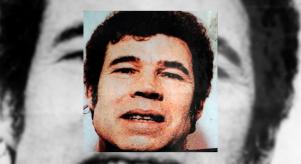
The Axeman of New Orleans
On March 19, 1919, New Orleans played music like it had never done so before. All of the dance clubs and bars were filled to capacity and bands played jazz at parties in hundreds of houses across town. The city, known as the birthplace of jazz, didn’t play music out of love that night but out of fear.
Three days prior on March 16, the Times-Picayune newspaper in New Orleans had published a letter by a serial killer known as The Axeman. He’d already killed before and he threatened to do so again on March 19 at 12:15 am, if he discovered any household not playing jazz music at that time.
When it comes to famous unsolved cases involving serial killers, the names ofJack the Ripper and theZodiac Killer jump to mind. Few will have heard of the Axeman of New Orleans, however, his vicious attacks left six people dead and six more severely injured. Like Jack, he wasn’t afraid to taunt the police and over a period of around 18 months from May 1918 to October 1919, he had ‘The Big Easy’ wrapped in a state of fear.
To this day the murderer’s identity remains unknown and his crime spree stopped as mysteriously as it had started.
On the night of May 22nd, 1918, Italian grocery store owner Joseph Maggio and his wife Catherine were discovered lying on their bed in a pool of blood. Joseph’s brother’s, who lived next door, were the ones who found the bodies. Joseph and Catherine had their throats cut with a razor blade whilst they slept. Their heads were then bashed in with an axe. Catherine’s throat was so deeply cut that it was almost severed from her shoulders.
Mrs Maggio will sit up tonight just like Mrs Toney.
The killer had entered the property by chiselling a lower wooden panel out of the backdoor. After the killing had taken place, the axe was left in the bathroom and the razor dispensed off in the neighbours garden. No valuable items had been taken eliminating burglary as a motive.
There were a number of arrests, including one of the Maggio brothers, however, all were released due to lack of evidence. The only clue was a cryptic message written in chalk on the pavement a short distance from the murder scene. The message read, ‘Mrs Maggio will sit up tonight just like Mrs Toney.’
The police theorised this message referred to a Mrs Tony Schiambra who was one of a number of grocers of Italian descent killed and attacked during the period 1911-12. The majority of those victims had fallen foul of an axe-wielding man, who’d entered their properties at night by knocking out a panel in the backdoor. If these earlier attacks were indeed connected, the Axeman had been applying his modus operandi for quite some time.
A month after the Maggio’s were killed, the Axeman supposedly struck again. On 27 June, baker John Zanca went to make a delivery to the grocery store owned by Louis Besumer. Realising something was not quite right, Zanca went to the door at the rear of the store where he knew Besumer and his supposed wife Harriet were residing. Zanca discovered the Besumer’s covered in blood but still very much alive.
The Besumer’s had been hacked at by a man wielding an axe, who’d again knocked out a panel in their backdoor and entered their bedroom whilst they slept. The axe, which actually belonged to Louis, was once again found in the bathroom and no valuables had been taken from the property.
Suspects were again rounded up, including an employee of Louis, but all were released due to lack of evidence. In a bizarre set of events that followed the attack, it was discovered that Harriet was not Louis’ wife but his mistress. The media had a field day and the frenzy that followed just muddied the waters further for the investigators.
Two months later Harriet died due to complications resulting from the injuries she sustained in the attack. However, before she passed away she pointed the finger of guilt towards Louis, claiming that he was also a German spy. Investigators found it hard to believe that this was the case since Louis had suffered a fractured skull, something he would have had to do have done to himself if he was guilty of attacking Harriet.
Nine months later a jury felt the same way and Louis was found not guilty of the attack.
The next Axeman attack came in August of that year, this time it was a pregnant woman named Mrs Schneider. After a long day at work, her husband returned home to find his wife covered in blood. Her scalp had been cut open and some of her teeth knocked out, but she was still alive.
After a couple of days Mrs Schneider regained consciousness in hospital and recounted seeing a dark figure looming over her after she awoke from a nap. She remembered seeing an axe. Luckily the trauma did not impact her baby daughter, who she gave birth too a short while later.
The attack on Schneider represented a slight change in the Axeman’s M.O., she was neither Italian nor a grocer, therefore it now seemed as if anyone in the city could become a target. After another Axeman suspect was cut loose by the police, New Orleans started to fear that some kind of boogeyman was on the loose in their city.
Terrified residents now lived with the constant fear of an Axeman attack...
Five days after the Schneider attack, the Axeman returned to his preferred target, attacking an elderly Italian grocer in his sleep. Pauline and Mary Bruno awoke to the sound of commotion coming from the next-door room, which was occupied by their uncle Joseph Romano. Upon entering they saw Joseph had been struck on the head and was badly bleeding. The assailant fled the room. The women described him as dark-skinned, heavy-set and wearing a dark suit and a slouch hat. Just like the other attacks, the attacker had chiselled a panel out of the back door to gain entry and again no items of value had been stolen. Two days later Joseph died of his wounds.
New Orleans went into a state of heightened panic, fuelled by the media frenzy that erupted in the wake of the Romano killing. Newspapers began reporting on armed men keeping watch over their families whilst they slept. Terrified residents now lived with the constant fear of an Axeman attack, made worse by the fact the police could offer no solution as to the identity of the killer.
A lot of things about the case made little to no sense. Why did the Axeman always leave the chisel he used to pull out the wooden door panels? Why did he always rely on axe’s found in people’s houses, never bringing his own? Although many people he had attacked were Italian grocers, some were not, therefore what connected the victims?
The Axeman would seemingly take a short hiatus from killing, returning once again seven months later on 10 March 1919. Nothing about his M.O. had changed - the victims were a family of grocers called the Cortimiglia’s, the Axeman entered the house via his trademark chiselling out of the backdoor panel, he used an axe taken from the victim’s household and he stole no valuables after the attack.
This was perhaps the Axeman’s worst attack yet. Rosie Cortimiglia awoke to the sight of her husband Charles fighting the Axeman. It was a fight he would lose taking multiple blows to the head and suffering a fractured skull. The Axeman would then turn his attention to Rosie, who was also cradling her two-year-old daughter in her arms. The axe came down upon them both, killing the child instantly and fracturing Rosie’s skull.
After he heard the screams coming from the Cortimiglia’s household, fellow grocer Iorlando Jordano rushed to his neighbour’s property and alerted the authorities.
The Axeman would go onto describe himself as ‘a demon from the hottest hell'...
Both Charles and Rosie would make full recoveries, although Rosie pointed the finger of guilt at the very man who came to their aid, Jordano. Being a rival grocer, Rosie pinned the blame on Jordano and his son Frank. The two men were charged with murder and found guilty. Frank was to hang, Jordano to serve life in prison. Charles vehemently denied his wife’s claims and reports state he divorced her shortly afterwards.
Nearly a year later Rosie recanted her testimony, saying she gave it out of spite and jealousy. The two men were released and the killing of the Cortimiglia’s baby daughter went on the Axeman’s tally.
A few days after the attack on the Cortimiglia’s, the Axeman decided to write to the Times-Picayune newspaper. The letter header said ‘Hell’ and it was addressed to ‘Esteemed Mortal.’ The Axeman would go onto describe himself as ‘a demon from the hottest hell’ who had a ‘close relationship with the Angel of Death’ and bragging that he could kill thousands more if he wanted to. He taunted the ‘foolish’ police declaring that he’d never be caught, as he was not a human being.
He then proceeded to threaten the whole city:
Now, to be exact, at 12:15 (earthly time) on next Tuesday night, I am going to pass over New Orleans. In my infinite mercy, I am going to make a little proposition to you people. Here it is:
I am very fond of jazz music, and I swear by all the devils in the nether regions that every person shall be spared in whose home a jazz band is in full swing at the time I have just mentioned. If everyone has a jazz band going, well, then, so much the better for you people. One thing is certain and that is that some of your people who do not jazz it out on that specific Tuesday night (if there be any) will get the axe.
When the clock struck 12:15 on 19 March, the city of New Orleans was alive and noisy, as the people made sure to ‘jazz it out’. A local composer, Joseph Davilla, even created a song just for that night, entitled ‘The Mysterious Axeman’s Jazz.’ It would go on to become a huge hit.
Although it’s doubtful that every household that night blared out jazz music into the early hours, the Axeman was clearly satisfied with what he heard as not a single attack occurred that night. In fact, the rest of spring and most of the summer would pass before another axe was wielded in terror.
In early August the Axeman would resume his attacks with the same M.O. Grocer Steve Boca was attacked whilst he slept, the Axeman cracking his head open with his usual weapon of choice. Nothing was stolen and the backdoor panel was once again removed. Boca recovered but couldn’t remember any details of the attack.
One month later on 3rd September, teenager Sarah Laumann was attacked during the night and suffered severe head injuries as well as missing teeth. A bloody axe was left on the front lawn. Like Boca, Laumann would recover but not remember a thing.
However, the attacker came in through the window not the backdoor of Laumann’s house, leading some to believe this was not the work of the Axeman but perhaps a copycat.
Then in October, the Axeman attacked again for what would become his final slaughter. Mike Pepitone, grocer and father of six, was the Axeman’s chosen target. Mike’s wife awoke to the sounds of a struggle coming from the next-door room where her husband resided. Blood was splattered across the majority of the room and Mike lay in a pool of his own blood. He would shortly die from the injuries sustained to his head. Mrs Pepitone claimed to see two men fleeing the scene. Apart from this additional person, everything else about the event and the crime scene was unchanged from previous Axeman attacks.
And just like that, it was all over. The Axeman was never seen or heard of again, like the spirit he claimed to be, he simply vanished into thin air. The true identity of the killer would remain one crime’s greatest unsolved mysteries.
Since the majority of the Axeman’s attacks were on Italian-American grocers, it has led some to believe that they were all victims of an early form of Mafia, called the Black Hand. Black Hand crime was a name given to an extortion method used in Italian neighbourhoods at this time, therefore the murders could be linked to unpaid extortion debts. However, the Axeman frequently left suspects alive, which many Mafia experts believe would not have been the case if they’d have been true Black Hand attacks.
In a similar vein, many Sicilian immigrants to American at that time had a deep distrust of the authorities, which led them to take disputes into their own hands and settle them the old-fashioned way, otherwise known as the ‘vendetta’. The vendetta could well have been the reason behind a number of the attacks.
Mumfre is the only legitimate suspect to have ever been linked to the real identity of the Axeman. Mumfre led a blackmailing gang in New Orleans that targeted Italian Americans. In December 1920, a year after the Axeman had struck his last victim Mike Pepitone, Mumfre himself was shot dead by the widow of Pepitone in Los Angeles. Mrs Pepitone claimed Mumfre was the Axeman and remembered seeing him run from the bedroom the night her husband was killed.
Mumfre had served time in prison, the dates apparently coinciding between 1912 and 1918 when the Axeman attacks stopped. They resumed at the same time Mumfre was a free man. He left New Orleans after the killing of Mike Pepitone, again explaining why the Axeman seemingly disappeared after 1919.
However, recent research into the period has failed to find any evidence of a man named Joseph Mumfre being attacked and killed in New Orleans, leading some to believe his existence is pure urban legend.
Although the Axeman had a very distinct M.O., not all of the killings followed it to the letter, leading some to believe the Axeman was, in fact, several people who may or may not have been working together to terrorise the community.
His ability to appear in people’s houses in the middle of the night and vanish just as easily, have some believing the Axeman was indeed what he said he was in his letter to the press - ‘the worst spirit that ever existed either in fact or realm of fancy.’




